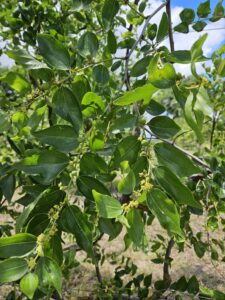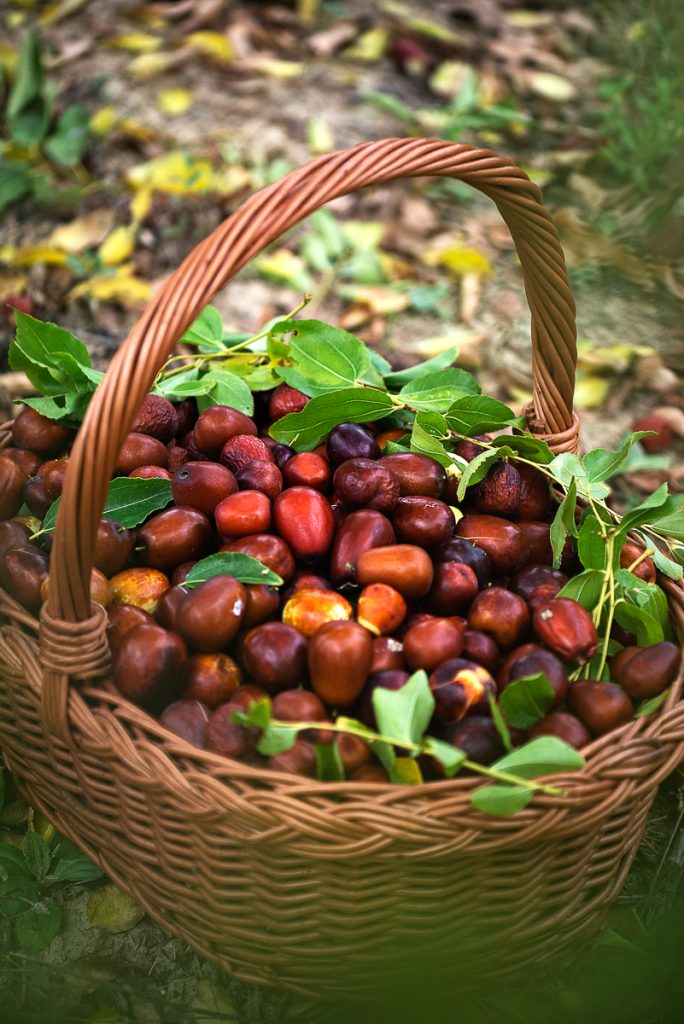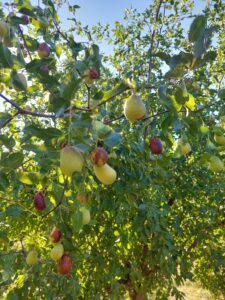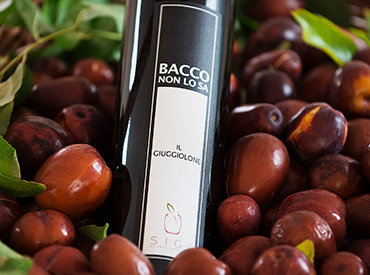THE JUJUBE TREE
In local dialect “Zizzolo”
Ziziphus jujuba Mill.
Rhamnaceae
The jujube tree (Ziziphus jujuba) is native to the tropical regions of Asia. Today, it has spread to Africa, the Far East and throughout the Mediterranean basin. In ancient times, it was also common in Europe, and the Romans were familiar with it. They introduced it to the continent and named it Zizyphum.
Some dialectal varieties, such as “zizoea” in Veneto and “zizoa” in Liguria, derive from its Latin name. Today, it is still cultivated for its sweet, nourishing fruit, but it also grows wild.
Jujubes have been known and used for over 4,000 years, especially in China, where botanists have selected high-quality varieties over the years. They are sold as exquisite desserts.

🍃 FEATURES AND USES
- Leaves: they are used in potpourri to repel insects.
- Fruits: They have a sweet, unique taste and are rich in beneficial properties.
- Traditional uses: In Chinese culture, jujubes are placed in the newlyweds’ bedroom as a wish for fertility, and they were offered as symbols of prosperity and longevity.
📍Local interesting fact
In Piediripa, in the province of Macerata, Si.Gi. is the only company in the area that produces jujube wine. It is sweet and perfect to accompany the colomba, a traditional Easter dessert, panettone or pastries with almonds.
About our product, Carlo Cambi, a journalist, said:
“The need to hide and preserve was born from the fermentation of these jujubes, because the farmers, in their need to preserve everything, would ferment anything, even the ‘formaggio di fossa’ (a traditional cheese). So, they would store the jujubes and create homemade liqueur. They used to keep this fermented drink in better bottles, the ones brought out on special occasions, such as when the priest came to bless the house. So, fermented jujubes become jujube juice and wine, with their tempting sweetness.”

📖THE JUJUBE TREE IN LITERATURE
🔹The jujube tree in the Odyssey
The most famous mention of the jujube tree is in Homer’s Odyssey (book 9), when Ulysses and his men arrive in the land of Lotus Eaters.
Although the lotus has been identified with various plants, many scholars believe it refers to the jujube tree, since its sweet and narcotic fruits match the description given. In book 9 of the Odyssey, Homer recounts that Ulysses and his men, who were off course due to a storm, were forced to land on the island of the Lotus Eaters (theoretically, today’s Djerba in North Africa). Once they landed to explore the island, some of his men were tempted by the lotus fruit, which is described as a magical fruit that made them forget their wives, families and homesickness. Many believe that the magical fruit which Homer describes is the Zizyphus Lotus, a type of wild jujube. In addition, the spell cast by the Lotus Eaters may not have been caused by narcotics, but rather by an alcoholic drink made from jujubes.
💭 Effect on People
Whoever ate jujubes forgot the desire to return home, entering a state of sweet oblivion.
🔹 Symbol of Peace and Calm
The jujube tree symbolizes a sweet, calm oblivion. This concept is associated with the idea of inner peace and detachment from worries.

✅ “Andare in brodo di giuggiole” can be translated as “gloat with pleasure”. It means reaching a state of extreme happiness and satisfaction.
📜 This saying comes from the sweetness of the fruit, which was considered a true heavenly delight.
✅“The Plant of the Lost Garden of Eden”
The jujube tree is said to have been one of the plants that survived the Garden of Eden, thanks to its resistance and ability to grow in difficult conditions. This makes it a symbol of resilience and beauty.
🍃 A PLANT FOR THE SOUL
In the warm seasons, watching the jujube branches swaying in the wind has a soothing effect. If you have one nearby, take two minutes of silence to observe it. You may discover a new source of tranquillity and well-being. 😊🌿
These contents were written and researched by the owners of the SiGi Agricultural Company in collaboration with the students of the Agricultural Technical Institute of Macerata.
If you would like to contribute to expanding the descriptions of these varieties, you can send an e-mail to info@agricolasigi.it
We launched the e-museum of ancient fruits thanks to a social farming project of the Marche region. The translation is by komalingua
This project enabled five young people with cognitive impairments, aged 20 to 25, to work on the farm. They were selected by psychologists and Anffas social workers, supported by the professional educator Il Faro and supervised by UniMc researchers. Coldiretti Marche handled communication and distribution.
This unique and challenging project led to the creation of both a physical and virtual museum of ancient fruits in SiGi’s garden. This is not only a great honor but also a significant commitment that we are willing to continue with everyone’s support. You can contribute to our projects by choosing our products, or you can do so directly here:

